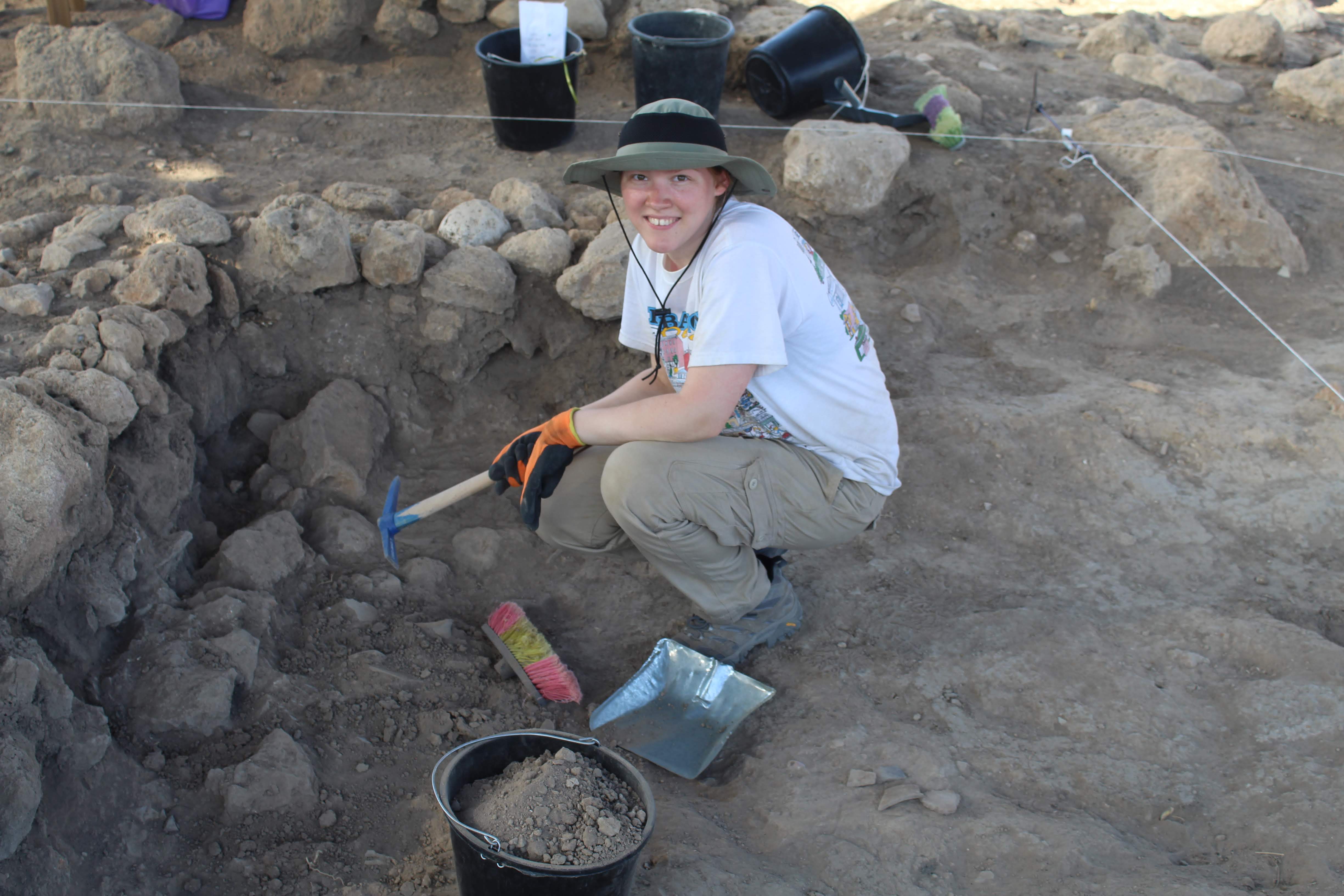By Samantha Foppe. There is no normal course of action when doing archaeology. Every day you have to be ready to change your previous plan and start from scratch. As someone who really likes to have a plan or an outline, not having the security of a constant plan was frustrating at first, but I quickly became use to it. When we began excavating in my square, there was a lot of starting and stopping and waiting for further instruction. It felt like we were barely getting anywhere. The square had been previously excavated by a different archaeologist, Moshe Dothan, several decades ago and we had been sorting through the plans he had for his excavation. This added an extra layer of complication to the excavation plans.
We started uncovering archaeological features that were unexpected, including what appears to be a hearth. This meant we had to create a new locus and portion off the square into a smaller area to excavate. Days later, we found a surface, and the plan changed again and we had to change the locus once more. Dothan’s plans included a wall and for a whole week we never uncovered said wall so the plan was altered. As we continued to dig, every time we may have found something, we needed to stop and wait for approval to continue. Every time I thought a course of action had been decided, we found something new and had to completely reevaluate.
Over the past two weeks, I have had to learn to adapt quickly to every new find during excavation. It has been a speedy transition from always having to follow a plan to going with the flow. At first it was stressful always changing direction, but now I feel much more at ease when we add new loci or begin digging in other areas. The ability to adapt quickly was a skill I never expected to need at an archaeological excavation but it is definitely a benefit I have begun to acquire.

Semi-circle of rocks which is a possible hearth

No Comments